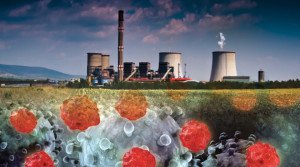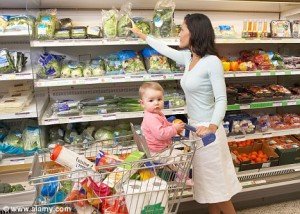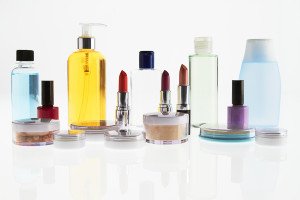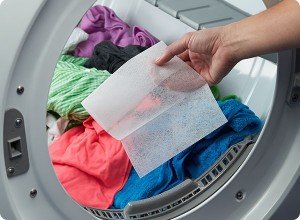What do your teeth say about you?
6 min read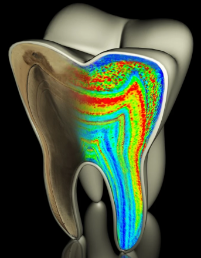
Baby teeth may soon be worth a lot more than the sentimental value they offer nostalgic parents. It turns out that these teeth store a unique type of health record, with the potential to reveal everything that an individual has been exposed to, including environmental toxins such as lead and pesticides, and stress hormones produced by the baby in utero.
It may sound like science fiction, but it’s the key to much of Manish Arora’s work. An environmental epidemiologist and exposure biologist at the Icahn School of Medicine at Mount Sinai in New York, Arora explains that teeth form rings as they grow — just as trees do, but daily instead of annually — and each ring contains information about exposures that occurred on the day it was formed. Using specialized equipment, he has developed ways to analyze what’s contained in those rings.
“I often describe [teeth],” he said, “as biologic hard drives.”
Arora’s work is part of an emerging field of study focused on the exposome, a term coined in 2005 to refer to the totality of health-affecting exposures that a person experiences.
Researchers say the studying of the exposome could dramatically alter how we assess health. Through a fingerprick of blood, for example, a doctor eventually may be able to analyze what an individual has been exposed to and use that information to help determine health risks linked to or caused by those exposures. By revealing exposures that occur during fetal development and throughout childhood, the baby teeth may provide the earliest and most extensive window into how environmental factors influence health.
“From childhood asthma to adult obesity, people are hypothesizing that exposures that occurred even when your mother was pregnant with you can be influencing your risks,” said David Balshaw, chief of the Exposure, Response and Technology Branch at the National Institute of Environmental Health Sciences. “The question becomes: What can you do about it?”
He says that the more we can connect specific early-life exposures with later health problems, the more we can adjust our behavior to reduce those risks. Someone identified as being at greater risk for respiratory conditions because of certain exposures in utero, for example, might want to avoid living in an area with a high level of particulate emissions.
While Balshaw said his agency and others have been developing the concept of the exposome and the tools for studying it for more than a decade, those efforts are now maturing, with projects sprouting up around the world. There are children’s studies in Europe and Japan. An international effort, based at Imperial College London, is working to develop a personal exposure monitoring system to collect and analyze data using smartphones, satellites and sensors. The Health and Exposome Research Center: Understanding Lifetime Exposures, or HERCULES Center, at Emory University was established in 2013 with the first exposome-specific grant in the United States
Recent leaps in both analytics and genomics technologies — along with a recognition that studying the genome alone wasn’t going to produce a complete picture of human health — have propelled the field. “It was very clear that the environment part had to be plugged into this,” said Gary Miller, director of the HERCULES Center. Interest in the exposome is particularly high for those studying children’s health.
Steve Rappaport, an environmental health professor at the University of California at Berkeley and director of the Berkeley Center for Exposure Biology, for instance, is studying blood samples from about 3,000 newborns to see what differences they may show between those who developed leukemia later in childhood and those who did not. Because genetics contributes little of the risk for childhood leukemia, Rappaport said, he’s on a hunt for what in the environment causes it.
Previous efforts to pinpoint environmental causes of disease have usually involved a hypothesis that substance X leads to condition Y — which essentially amounts to guesswork, said Rappaport, because that approach involves testing specific substances rather than casting a wide net to find anything and everything that might get caught. In other words, looking for one thing almost precludes finding anything else.
“The idea of [the exposome] is, you don’t guess. You look for everything you can measure,” he said. He thinks his team has identified three or four molecules in the blood that seem to predict development of childhood leukemia and are environmental in nature, meaning they are not genetic and resulted from external exposure or even internally, such as from diet or stress.
Rappaport hopes to begin another study looking for associations between women who develop breast cancer and what their mothers were exposed to during pregnancy. (The mothers’ blood was collected in the 1960s and stored.) He would measure compounds that are produced when the blood reacts with substances such as toxic chemicals, then evaluate commonalities in the blood of women whose daughters have developed breast cancer. “There’s some hypotheses that many cancers are initiated very early in life, during gestation,” he said.
That’s part of the motivation for focusing exposome research on children. There are implications for a host of adult-onset conditions, from Alzheimer’s to heart disease, that are increasingly linked with things that happen early in life. (Another reason is that children are simply more vulnerable to the harmful effects of chemicals: Their systems are still developing, and because their bodies are small, an exposure that might not be that significant in an adult can cause damage in a child.)
Researchers are also excited about the opportunities the exposome opens up for studying the effects of chemical mixtures as well as the role that the timing and extent of exposures play in predicting health. That’s why Arora’s tooth biomarker is so promising: It can identify not only what a child was exposed to but also when the exposure occurred. And because the ring created on a baby’s birth date is different from every other line, Arora’s information is very precise as to whether an exposure occurred in the womb or not.
“In the last couple years, we’ve really been interested in not just dose, but when did that exposure happen,” he said. “There are critical windows during our development when we are highly susceptible. And if exposure happens outside those windows, it might not be related to the health outcome at all, but if it happens in that critical period, it could have a huge impact.”
(Thalidomide, used briefly in the early 1960s as a treatment for morning sickness, may be the best-known example of this: When taken between about the fourth and ninth weeks of pregnancy, the drug can cause severe birth defects, but otherwise it may carry little risk and even benefit some women.)
Arora will be using his tooth biomarker to study, among other things, how mixtures of chemicals affect neurodevelopment in children. Instead of looking at the impacts of individual chemicals, as has been the traditional method of determining the toxicity of a substance, and rather than studying the effects of a group of chemicals of his own choosing, he has developed a method for studying thousands of chemicals at once.
“No one is exposed to one chemical at a time. Everybody is exposed to clusters of chemicals at a time,” said Robert Wright, director of the Lautenberg Laboratory for Environmental Health at the Icahn School of Medicine. “Very few, if any, studies have actually addressed that.”
Wright, Rappaport and other researchers are confident that their work will be key to treating or preventing some major health problems.
Perhaps more than anything else, the scientists say, the exposome marks a fundamental shift in looking at health. It moves research away from the “one off, ‘this exposure, that disease’ understanding,” Balshaw said, and toward an approach that accounts for the many combinations of substances we are exposed to — in the air, food, ourselves — throughout life. We live in a complex world; proponents of the exposome are hoping to give the medical community the tools to deal with that.
